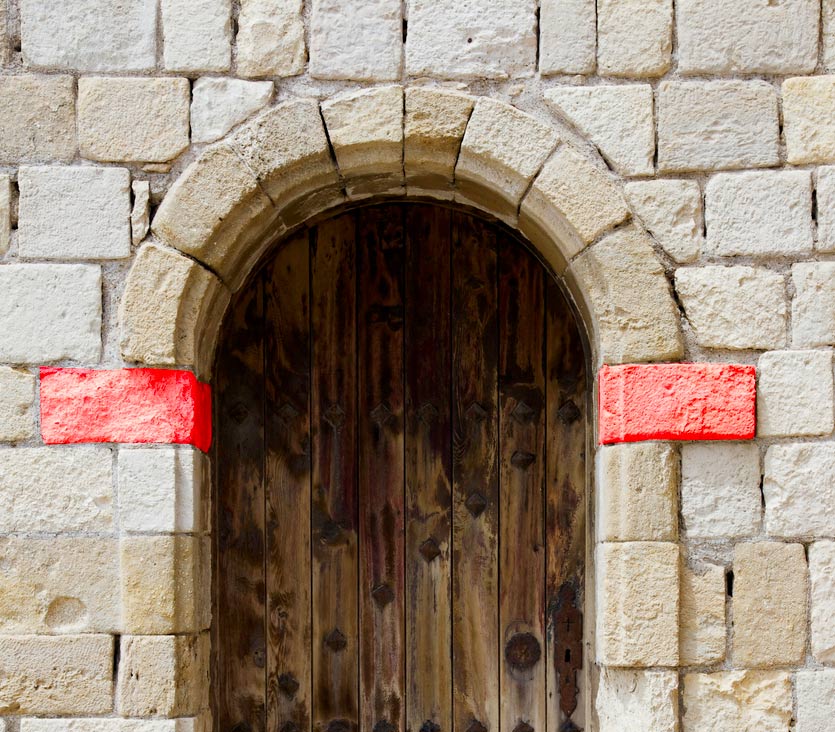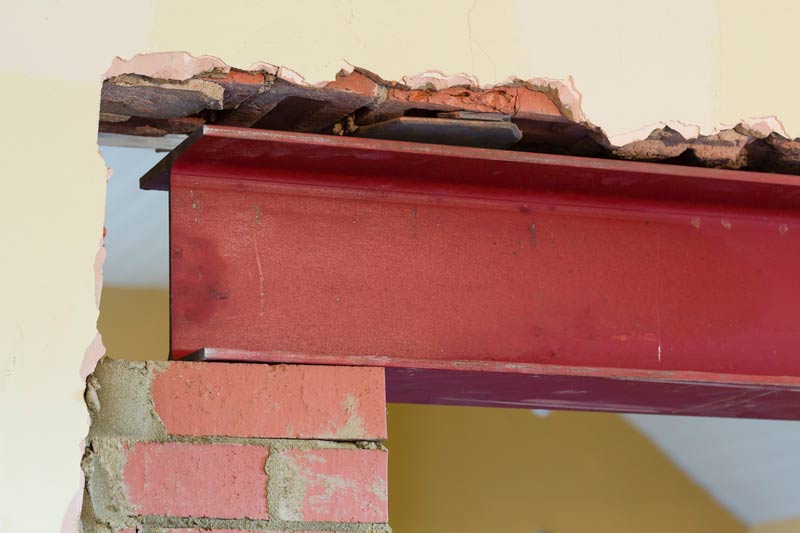A concrete padstone is a dense block designed to take a heavy point loading at a beam-end or as a lintel support to prevent standard blockwork or other masonry from failing. Standard masonry, such as block or brickwork can crack or be crushed by higher loads.
Using the right padstone will prevent this from happening.
Padstone Development
The padstone originated from the need to ease the force exerted by timber frames onto stone walls. Padstones were usually made of cut stone, hence the name, and were set in brick or stone-framed walls.
Shop Padstones

They create a foundation pad on which heavier loads can be supported and distributed safely.
In Roman buildings, larger stones are laid at the springing point of arches, where pressure from the weight of the arch, and everything it supports, comes together.
Modern buildings use concrete padstones in the same way, to transfer the load from the end bearing of a lintel. A three-metre opening below a gable end will have the full weight of the masonry above it bearing on just 150mm at each end.
Modern Concrete Padstones
The compressive strength of a concrete padstone makes it better able to take and redistribute the bearing of a heavy-duty lintel, timber, or steel beam. Most are made with C30 in a controlled industrial environment to guarantee quality and compressive strength.
Like a concrete pad foundation, a concrete padstone takes and spreads a load into the surrounding structure, taking some of the shear forces away from the wall.
With its high-density smooth finish, a modern pre-cast concrete padstone fits in well with any fair-face finish too.
Padstones Sizes
Concrete padstones are generally sized to fit standard wall constructions and start at 100mm in width to sit on a brick or block inner or outer leaf as required.
Wider wall constructions are also accommodated with 140mm sized padstones and for columns and brick piers that require extra support, there is also a range of padstone sizes of 215mm.
Some difficult situations such as corner bearings are also taken care of in the realm of pre-cast concrete padstones, helping you through most tricky spots.
Installing Padstones
Concrete padstones must be placed properly on the masonry wall to support the steel beam or other lintel loading. If the lintel or beam cannot sit properly square onto the padstone then the distribution of the load may not be consistent.
This is especially important when setting RSJs, as any misalignment can cause collapse. Similarly, the function of a concrete padstone must always give way to form.
Instal a padstone level, with decent bearing in the wall and not too deep a mortar bed. You can use steel shims as packers to level up a padstone if required.
Can I Cast a Padstone On-Site?
In some rare situations, it might be a good idea to cast your padstone in situ, however, conditions can be very variable on a construction site. Getting the mix and quality right and avoiding deformities can be challenging.
Pre-cast concrete padstones have had a minimum of thirty days of curing time before leaving the factory to make sure they have reached their full compressive strength. As soon as a padstone is delivered to a site it can be deployed.
The only waiting time will be for the mortar bed to cure before installing the steel beam or lintel.
Can I Use Concrete Blocks
Most general-duty concrete blocks for use in foundation works are 7kN. Aerated and lighter-duty blocks are used for inner leaf, internal partition, and load-bearing walls. Some concrete blocks are made up to 22.5kN, but these are rarely used by general contractors.
In comparison, a padstone from Wade’s stock supplier, Naylor comes in at 50kN and can take high point loads at the end of a beam or lintel. Padstones also come in a range of sizes to suit wall thicknesses, brick and block piers, and other situations from 100mm, 140mm to 215mm.
Can I Cut Down a Concrete Lintel?
Concrete padstones are designed and made to do a specific job. So too are lintels. It might be tempting to cut down a pre-stressed concrete lintel to perhaps save some time or money, but at the end of the day, it’s not the right way to go. It won’t have the same compressive strength over time.
That said, there is a range of smaller lintels that are cast to the same compressive strength as a padstone. However, you must be sure that what you are ordering is up to the job.
These padstones are supplied as lintels and are often used to support service openings in foundation construction where high compressive strength is a structural requirement.
What Are the Alternatives?
The only real alternative to using a concrete padstone would be to employ engineering bricks. Class A engineering bricks have a compressive strength of 125kN, and Class B has 75kN, so both are suitable where a smaller padstone is required.

Should a padstone need to be 215mm x 100mm, or the size of a standard brick, then an engineering brick is a viable alternative.










































